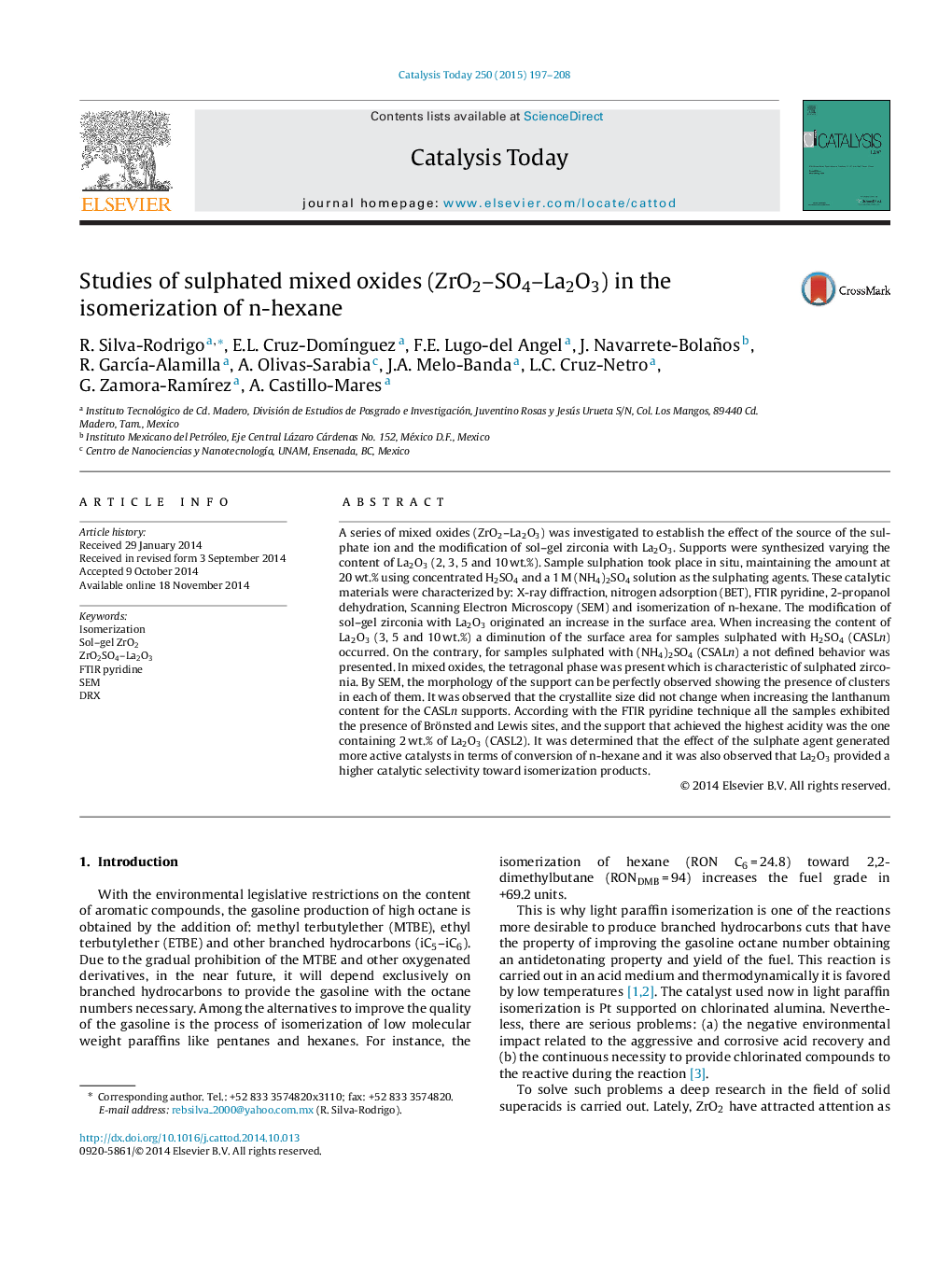| Article ID | Journal | Published Year | Pages | File Type |
|---|---|---|---|---|
| 53932 | Catalysis Today | 2015 | 12 Pages |
•This work presents the effect of two sources of the sulfate ion [H2SO4 and (NH4)2SO4 1 M] and their repercussions when added to modified sol–gel zirconia with La2O3.•Supports were synthesized varying the content of La2O3 (2, 3, 5 and 10 wt.%) playing an important role in the modification of the catalysts providing stability and activity.•The catalytic activity was evaluated in the n-hexane isomerization reaction.
A series of mixed oxides (ZrO2–La2O3) was investigated to establish the effect of the source of the sulphate ion and the modification of sol–gel zirconia with La2O3. Supports were synthesized varying the content of La2O3 (2, 3, 5 and 10 wt.%). Sample sulphation took place in situ, maintaining the amount at 20 wt.% using concentrated H2SO4 and a 1 M (NH4)2SO4 solution as the sulphating agents. These catalytic materials were characterized by: X-ray diffraction, nitrogen adsorption (BET), FTIR pyridine, 2-propanol dehydration, Scanning Electron Microscopy (SEM) and isomerization of n-hexane. The modification of sol–gel zirconia with La2O3 originated an increase in the surface area. When increasing the content of La2O3 (3, 5 and 10 wt.%) a diminution of the surface area for samples sulphated with H2SO4 (CASLn) occurred. On the contrary, for samples sulphated with (NH4)2SO4 (CSALn) a not defined behavior was presented. In mixed oxides, the tetragonal phase was present which is characteristic of sulphated zirconia. By SEM, the morphology of the support can be perfectly observed showing the presence of clusters in each of them. It was observed that the crystallite size did not change when increasing the lanthanum content for the CASLn supports. According with the FTIR pyridine technique all the samples exhibited the presence of Brönsted and Lewis sites, and the support that achieved the highest acidity was the one containing 2 wt.% of La2O3 (CASL2). It was determined that the effect of the sulphate agent generated more active catalysts in terms of conversion of n-hexane and it was also observed that La2O3 provided a higher catalytic selectivity toward isomerization products.
Graphical abstractIsomerization of n-hexane conversion and product selectivity with Pt/CASLn and Pt/CSALn catalysts.Figure optionsDownload full-size imageDownload high-quality image (168 K)Download as PowerPoint slide
